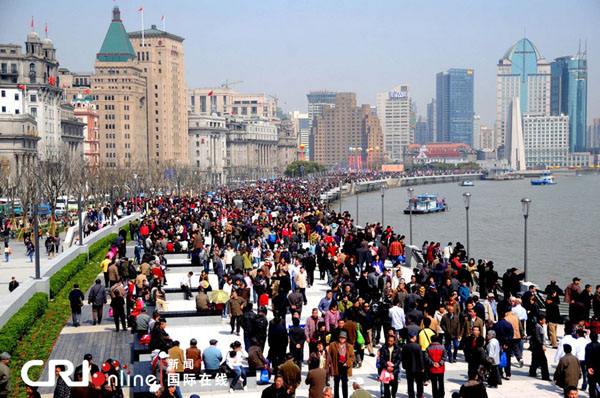


(Photo/CRI Online)
By the end of 2018, population sizes of 27 of 31 provincial-level administrative areas in China had risen from the previous year, while Beijing and three provinces in northeast China have seen reduction in the size of their populations, Chinanews.com reported on Jun.16.
According to the latest statistics from China’s National Bureau of Statistics on the economic and social development in various China cities, the permanent resident population of south China’s Guangdong province had reached 113.5 million by the end of 2018, making the province the first among all provincial-level administrative areas in the country in terms of population size for 13 years in a row since 2006.
With a permanent resident population of 100.5 million and 96.1 million by the end of 2018, east China’s Shandong Province and central China’s Henan Province were ranked the second and third respectively in the entire country.
The provinces which are more economically developed have relatively higher populations, as nine of the top 10 Chinese provincial-level administrative areas in terms of regional GDP also ranked the top 10 in terms of permanent resident population size.
Statistics showed that by the end of 2018, Beijing’s permanent resident population was 21.5 million, falling by 170,000 year-on-year, while the permanent resident population of northeast China’s Liaoning Province, Heilongjiang Province, and Jilin Province had decreased by 100,000, 160,000, and 130,000 respectively.
Experts pointed out that the fall in permanent resident population size of Beijing and the three provinces in northeast China, though similar, resulted from totally different causes.
In the case of Beijing, high cost of living in the city has caused many people to relocate. Furthermore, some of the city’s policies regarding relieving pressure from functions unrelated to its status as national capital and control of population have also helped slow down the growth of population in the city.
The three provinces in northeast China, Liaoning, Heilongjiang and Jilin, have relatively low natural population growth rates, which, plus outflow of population caused by reduction in employment opportunities and unsmooth economic development, has led to the fall in population size.
 Fire brigade in Shanghai holds group wedding
Fire brigade in Shanghai holds group wedding Tourists enjoy ice sculptures in Datan Town, north China
Tourists enjoy ice sculptures in Datan Town, north China Sunset scenery of Dayan Pagoda in Xi'an
Sunset scenery of Dayan Pagoda in Xi'an Tourists have fun at scenic spot in Nanlong Town, NW China
Tourists have fun at scenic spot in Nanlong Town, NW China Harbin attracts tourists by making best use of ice in winter
Harbin attracts tourists by making best use of ice in winter In pics: FIS Alpine Ski Women's World Cup Slalom
In pics: FIS Alpine Ski Women's World Cup Slalom Black-necked cranes rest at reservoir in Lhunzhub County, Lhasa
Black-necked cranes rest at reservoir in Lhunzhub County, Lhasa China's FAST telescope will be available to foreign scientists in April
China's FAST telescope will be available to foreign scientists in April "She power" plays indispensable role in poverty alleviation
"She power" plays indispensable role in poverty alleviation Top 10 world news events of People's Daily in 2020
Top 10 world news events of People's Daily in 2020 Top 10 China news events of People's Daily in 2020
Top 10 China news events of People's Daily in 2020 Top 10 media buzzwords of 2020
Top 10 media buzzwords of 2020 Year-ender:10 major tourism stories of 2020
Year-ender:10 major tourism stories of 2020 No interference in Venezuelan issues
No interference in Venezuelan issues
 Biz prepares for trade spat
Biz prepares for trade spat
 Broadcasting Continent
Broadcasting Continent Australia wins Chinese CEOs as US loses
Australia wins Chinese CEOs as US loses